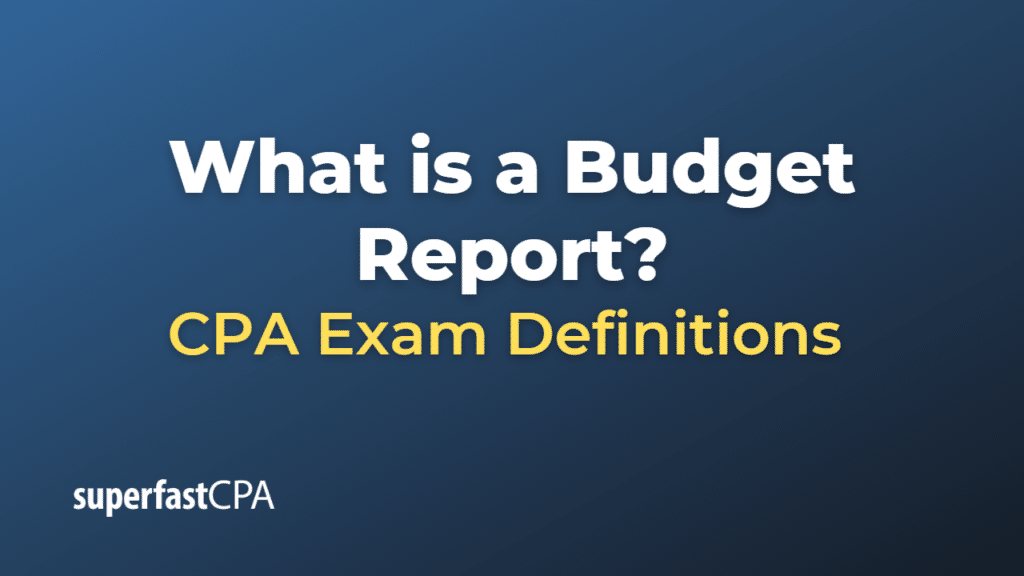Budget Report
A budget report is a financial document that compares an organization’s actual financial performance with its budgeted figures for a specific period. The report helps management, stakeholders, and decision-makers understand how well the organization is adhering to its financial plans, identify any significant variances, and make informed decisions to adjust the budget or operations as necessary.
A typical budget report includes the following components:
- Budgeted figures: The planned financial allocations for various categories, such as revenues, expenses, assets, and liabilities, as approved at the beginning of the budget period (usually a fiscal year).
- Actual figures: The real financial performance of the organization, based on actual transactions and events, for the same categories as the budgeted figures.
- Variance: The difference between the actual figures and the budgeted figures, calculated for each category.
- Variance percentage: The variance expressed as a percentage of the budgeted figures, which helps to determine the significance of the deviation.
- Analysis and explanations: A narrative section that explains the reasons behind significant variances, including internal factors (such as operational inefficiencies or changes in strategy) and external factors (such as market conditions or regulatory changes).
Budget reports can be prepared for various timeframes, such as monthly, quarterly, or annually, depending on the organization’s needs and the level of detail required for effective decision-making. By regularly reviewing budget reports, organizations can proactively address any issues or opportunities that arise, ensuring that resources are used efficiently and financial objectives are met.
Example of a Budget Report
Let’s consider a simplified example of a budget report for a small retail business, “Happy Shirts,” for the first quarter of the fiscal year.
Happy Shirts – Budget Report (Q1)
| Category | Budgeted | Actual | Variance | Variance % |
|---|---|---|---|---|
| Revenues | ||||
| Sales | 50,000 | 58,000 | 8,000 | 16% |
| Expenses | ||||
| Cost of Goods Sold (COGS) | 25,000 | 26,500 | (1,500) | -6% |
| Rent | 5,000 | 5,000 | 0 | 0% |
| Wages | 10,000 | 9,500 | 500 | 5% |
| Marketing | 3,000 | 3,500 | (500) | -17% |
| Utilities | 1,000 | 1,200 | (200) | -20% |
| Net Income | 6,000 | 12,800 | 6,800 | 113% |
Analysis and Explanations:
- Sales exceeded the budget by 16%, which can be attributed to a successful marketing campaign and a seasonal surge in demand for the company’s products.
- Cost of Goods Sold (COGS) was 6% higher than budgeted, due to an increase in raw material costs and a slight delay in receiving supplier discounts.
- Rent had no variance, as it’s a fixed cost.
- Wages were 5% lower than budgeted because the business owner decided to postpone hiring an additional part-time employee.
- Marketing expenses were 17% higher than budgeted, as the business invested in additional advertising channels to reach a broader audience.
- Utilities were 20% higher than budgeted, mainly due to increased electricity consumption during a particularly cold winter.
Overall, Happy Shirts experienced a higher net income than budgeted for the first quarter, primarily driven by increased sales. However, management should closely monitor the rising costs in COGS, marketing, and utilities, and consider making adjustments to the budget or operations to maintain profitability.
This example demonstrates how a budget report helps identify deviations from the planned financial performance and provides insights into the reasons behind those variances. With this information, the business can make informed decisions to address any issues or capitalize on opportunities that arise.













